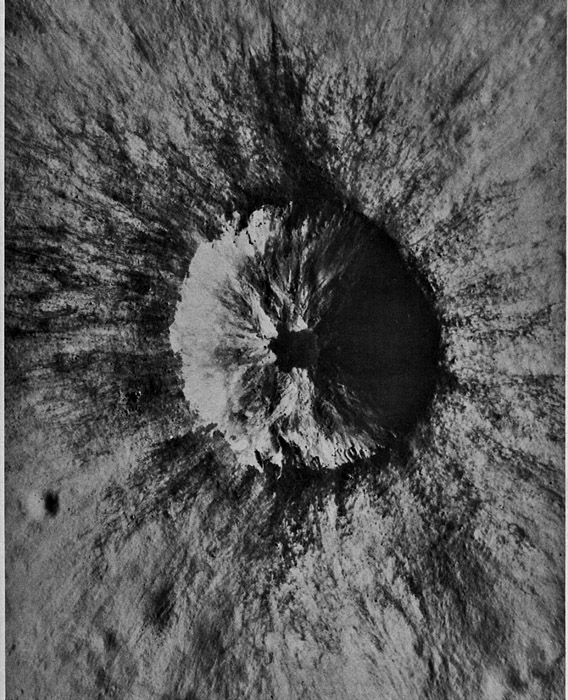June 30, 2008
Tunguska And the Moon

Apollo 15-8936 Panoramic Camera image from Apollo Over the Moon: A View from Orbit. This crater is about 2 km in diameter, rather than 800 m, but has a morphology very similar to a fresh crater formed by the Tunguska projectile. The smooth material on the floor is impact melt.
One hundred years ago this morning a massive explosion in the skies over Siberia flattened forests and killed thousands of bears and reindeer. There is still debate over what the projectile was, but the effects on Earth are clear. The atmospheric burst caused a pressure wave that blew over trees for a radius of about 25 kilometers, knocked people to the ground 60 km from ground zero, and created measurable tremors 1000 km away. And yet this was apparently a cosmically small projectile (about 50 m diameter) - the effects were magnified because it was an airburst. If this same projectile had hit the Moon it would have produced a simple crater 800 m wide, just visible in the best amateur images from Earth. The devastation would have been more localized because of the lack of an atmosphere, but the ejecta would have raked the surface for kilometers and the severe shaking would have caused downslope movement on distant crater rims and hill slopes, exposing bright material not yet darkened by solar radiation and particles. It has been estimated that a Tunguska size event occurs on Earth about every 300 years; with the new high resolution imaging of the Moon by orbiters it will be possible to determining the cratering rate since Apollo. This will help constrain the recurrence interval for asteroid collisions for Earth.
Chuck Wood
Related Links
Great overview
Wikipedia
History Channel video stressing ufo ideas as well as scientific ones
TOMORROW: A NEW LPOD!
COMMENTS
1. See also Carl Sagan's COSMOS, Chapter IV: Heaven and Hell (on the nature of comets and possible impacts on planet Earth, such as the one in Siberia 1908).
--Danny C.
2. It's interesting how the rays are made of dark material and appear to favor one side over the other. I wonder if such an impact took place on the surface of the Earth would rays be visible and for how long? - " style="outline: none; http://www.wikispaces.com/user/pic/AndrewMartinSFO-lg.jpg AndrewMartinSFO
COMMENTS?
Register, Log in, and join in the comments.



